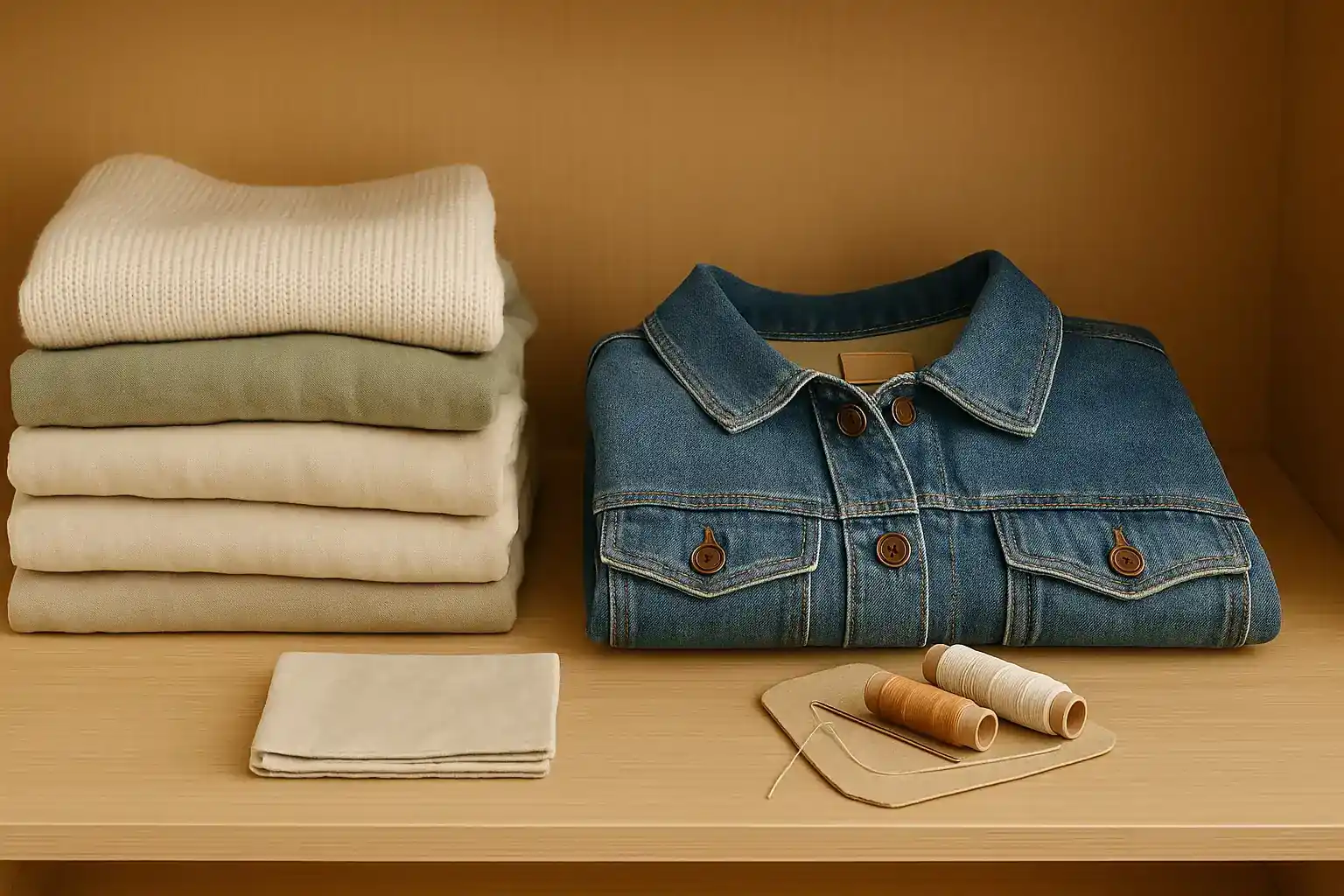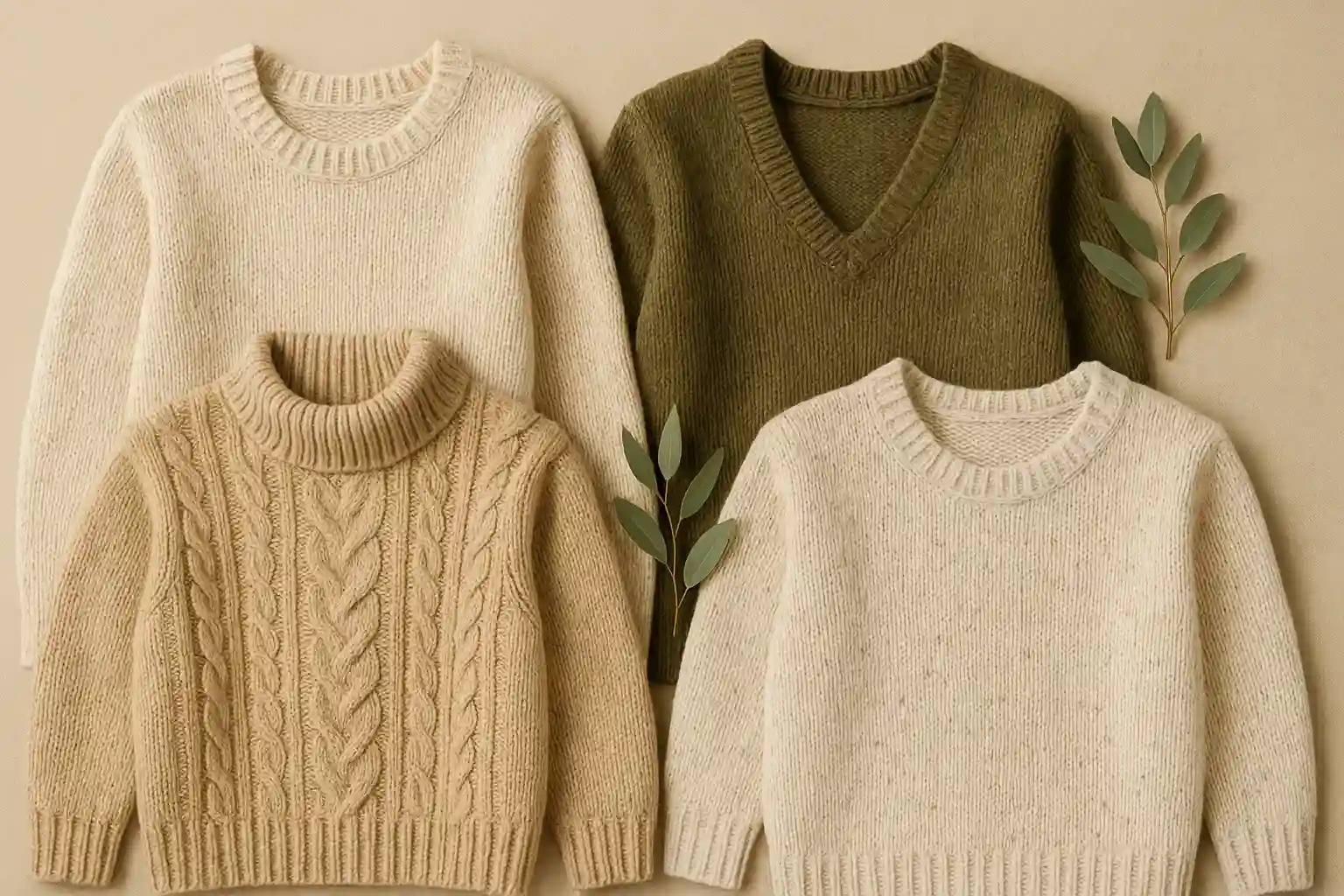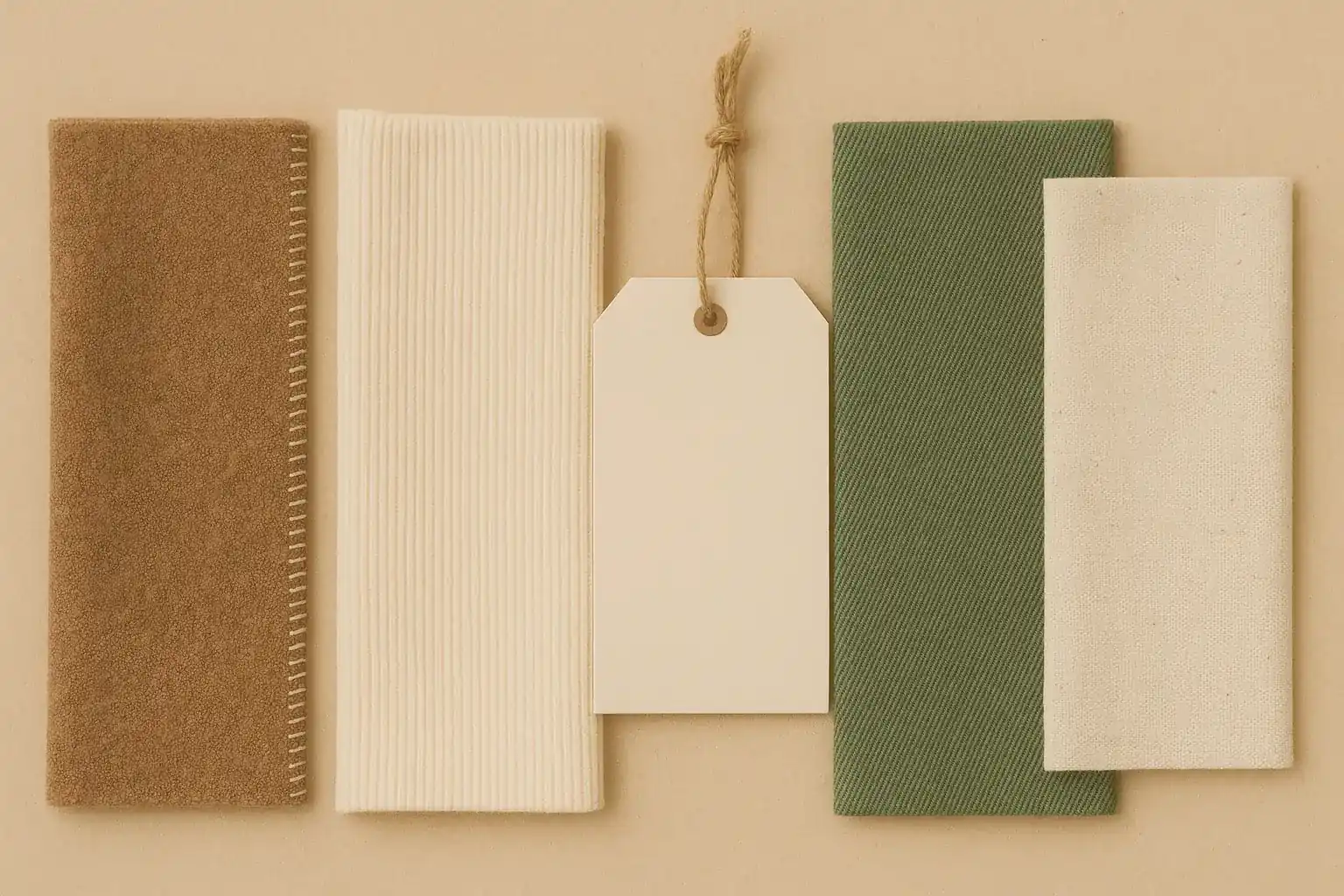Your Closet's Carbon Copy: Using a Fashion Footprint Calculator to Understand Your Impact

We've talked about decoding fabric labels, supporting ethical brands, and the power of thrifting. These are all vital pieces of the sustainable fashion puzzle. But sometimes, the sheer scale of fashion's environmental impact can feel overwhelming. You make conscious choices here and there, but how much of a difference is it really making? What does your personal wardrobe contribute?
This is where a Fashion Footprint Calculator comes in. Think of it as a diagnostic tool for your closet – a way to quantify the environmental weight of your clothing habits and pinpoint the areas where you can make the biggest positive changes.
Understanding your personal fashion footprint can move the abstract concept of "sustainable fashion" into concrete, actionable steps. It educates, motivates, and guides you towards a wardrobe that looks good and does good.
What is a Fashion Footprint?
Before we get to the calculator, let's briefly define what we mean by "fashion footprint." It's the total environmental (and often social) impact generated throughout a garment's entire lifecycle. This includes:
- Raw Material Production: Growing cotton (water, pesticides, land use), extracting petroleum for synthetics (resource depletion, energy), harvesting trees for regenerated fibers (forestry practices).
- Manufacturing: Spinning, weaving, dyeing, finishing (massive water and energy use, chemical pollution, waste generation).
- Transportation: Moving materials and finished goods globally (carbon emissions).
- Retail & Packaging: Energy for stores, packaging waste.
- Consumer Use: Washing, drying, ironing (energy and water use, microplastic shedding).
- End-of-Life: Landfill (methane emissions, non-biodegradability), incineration (air pollution), recycling (energy, process impacts).
It's a complex web of impacts, making it hard for an individual to grasp their piece of the pie.
Enter the Fashion Footprint Calculator
A fashion footprint calculator is an online tool or app designed to estimate your personal environmental impact based on your clothing consumption and care habits. It translates your choices into quantifiable metrics, most commonly:
- Carbon Emissions (usually measured in kg or tonnes of CO2e - carbon dioxide equivalent): This represents the greenhouse gas emissions associated with production, transport, and care.
- Water Consumption (usually measured in liters): This highlights the enormous amount of water used in fiber production (especially cotton) and textile processing (dyeing, finishing).
- Waste Generation (usually measured in kg): This reflects the textile waste created during manufacturing and, crucially, the potential waste at the end of the garment's life if not properly donated, resold, or recycled.
How Do These Calculators Work? (Common Questions They Ask)
While every calculator is different, they typically ask you questions about your habits over a specific period (like a year) to estimate your impact. Be prepared to consider:
- How many new clothing items do you buy? (Often broken down by type, e.g., tops, bottoms, dresses).
- What types of fabrics do you most commonly buy? (e.g., Polyester, Cotton, Jeans, Viscose, Linen, etc. - this is where understanding fabric impacts is key!).
- How often do you do laundry?
- What temperature do you typically wash at?
- Do you use a tumble dryer?
- How often do you get rid of clothes?
- What do you do with clothes you no longer want? (Donate, sell, throw away).
- Do you buy second-hand clothes? (Buying used significantly reduces impact).
Based on your answers and average data associated with different materials and lifecycle stages, the calculator provides an estimated footprint.
Why Use a Fashion Footprint Calculator?
Seeing numbers associated with your habits can be incredibly impactful:
- Raises Awareness: It makes the abstract consequences of your consumption concrete and personal.
- Identifies "Hotspots": The results can show you which specific behaviors contribute most to your footprint (e.g., buying lots of new synthetics, frequent hot washes).
- Provides a Baseline: You get a starting point to measure future progress.
- Motivates Change: Seeing the numbers can be a powerful incentive to adopt more sustainable habits.
- Guides Better Choices: It helps you understand why choosing organic cotton over conventional, recycled over virgin polyester, or buying secondhand dramatically lowers your impact.
Understanding the Nuances & Limitations
It's important to approach these calculators with a realistic perspective:
- They Provide Estimates: These calculators use average data for fabric production, transport, etc. Your actual impact might vary depending on the specific brand's supply chain efficiency, the factory location, etc.
- Data Varies: Different calculators might use slightly different data sets, leading to varying results. Don't get fixated on the exact number, focus on the relative impact and trends.
- Focus on Consumption: Many calculators heavily weight the "buying new" aspect, as this is where a large chunk of the footprint lies. The impact of keeping clothes for a very long time versus discarding them quickly is significant but can be harder for calculators to fully capture unless they ask specific questions about garment lifespan.
- Social Impact is Often Excluded: Most environmental footprint calculators don't include the ethical dimensions like fair wages or safe working conditions, which are critical parts of sustainable fashion.
From Numbers to Action: Reducing Your Footprint
Once you have a sense of your fashion footprint, don't despair! Use it as a tool for positive change. The calculator helps highlight why these actions matter:
- Buy Less: The most effective way to reduce your footprint. Every new item has an impact, regardless of how sustainably it's made. The calculator will likely show this is your biggest leverage point.
- Buy Better: When you do buy, choose items made from sustainable materials (see our previous post!), from transparent and ethical brands, and prioritize quality and durability. The calculator can show the difference between choosing a recycled vs. virgin fiber.
- Care for What You Own: Washing less often, using cold water, line drying instead of tumble drying significantly reduces the "use phase" impact (energy and water).
- Wear Longer: Increase the number of times you wear an item. Extending a garment's life by even a few months dramatically lowers its per-wear footprint.
- Explore Circularity: Embrace thrifting, swapping, renting, and repairing clothes. Buying secondhand has a tiny fraction of the footprint of buying new.
- Dispose Responsibly: When an item's life is truly over, donate if usable, or find textile recycling options for those that aren't.
Finding a Fashion Footprint Calculator:
A quick online search for "fashion footprint calculator" will bring up several options. Look for calculators offered by reputable environmental organizations, sustainable fashion platforms, or brands known for their transparency. Try a couple to see if the results are similar or highlight different aspects of your impact.
Your Journey Starts Here
Using a fashion footprint calculator is a powerful step towards becoming a more conscious consumer. It demystifies the impact of your wardrobe and empowers you to make informed decisions. It's not about feeling guilty; it's about gaining knowledge and taking purposeful action.
Understand your footprint, identify where you can make the most significant changes, and embark on a more sustainable fashion journey. Your choices have power, and now you have a tool to help you see just how much.
Related Blogs

10 Transformative Wardrobe Swaps for a Lighter Environmental Fashion Footprint
Learn how to reduce your fashion footprint with impactful wardrobe swaps.

Wrap Yourself in Responsibility: Choosing Sustainable Alternatives to Acrylic Sweaters
Upgrade to durable and breathable wool (certified farms), alpaca, or Tencel-blend knits.

Decoding Fabric Labels: What's Really Sustainable?
Insights on decoding fabric labels in a sustainable way.

Outsmarting the Dry Cleaner: Choosing Machine Washable Naturals for a Toxin-Free Wardrobe
Avoid toxic PERC solvents by opting for machine washable organic cotton and linen clothing.

Step Lightly: Choosing Sustainable Alternatives to Nylon Stockings
Opt for recycled nylon, biodegradable, or ladder-resistant hosiery for longer wear and less waste.

Fastening the Future: Choosing Sustainable Alternatives to Plastic Buttons
Opt for biodegradable coconut shell, corozo, or wood buttons for eco-conscious clothing.
Stay in the Loop
Get tips and insights tailored to your interests — no spam, just sustainability.